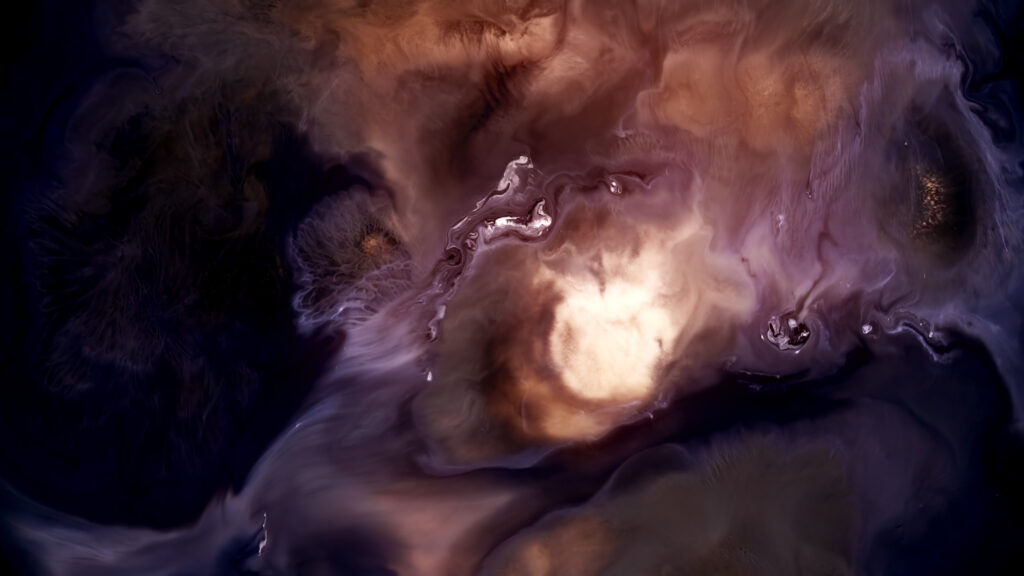Menu
Background
Helios considers what the uncharted territories of outer space might look like. It was created as a passion project in my basement studio using various liquids and chemicals. It is staged as an audiovisual stimulus inspired by the aesthetics of vintage NASA space travel.
Having spent my entire childhood in an area lacking both basic infrastructure and light pollution, I developed an escapist obsession for watching the night sky and contemplating. I would constantly get on people’s nerves asking: “What do the limits of outer space look like? And what’s behind that?”.
This is how I imagined it.
Final Film
Runtime: 02:39 Min
Music: Alva Noto & Ryuichi Sakamoto – Transition
Audio: Mission Audio from the Apollo 11, Day 3
SFX: Electromagnetic vibrations from Mars pulsating in various wavelenghts mapped as sound.
Shot Breakdown
While this is a pretty standard workflow for shooting liquids my take on it was to push the outcome in post so hard that it becomes almost indistinguishable from CGI generated particles. Real world practical effects have proven to deliver the tangibility I was looking for in order to illustrate the metaphysical aspects of space travel.
VFX, HUD animation and compositing was done in After Effects. All HUD elements have been replicated from the Apollo Lunar Excursion Module. It was great fun diving into NASA’s design world and collecting all sorts of references like realistic light fall-off in space, HUD elements and even spaceship interiors.
Fun trivia: the landing point designator shown in two shots consists of a set of lines scribed onto the inner and outer panes of the commander‘s forward-facing window. The commander positions himself in such a way that the two sets of lines are superimposed in order to precisely determine the designated landing site. Despite having the most sophisticated computers on board the designator was utterly indispensable.
Credits
Design & Direction
Nicolas Arnold
